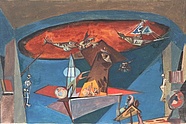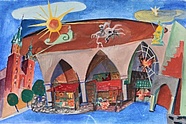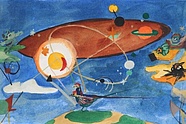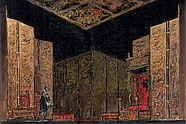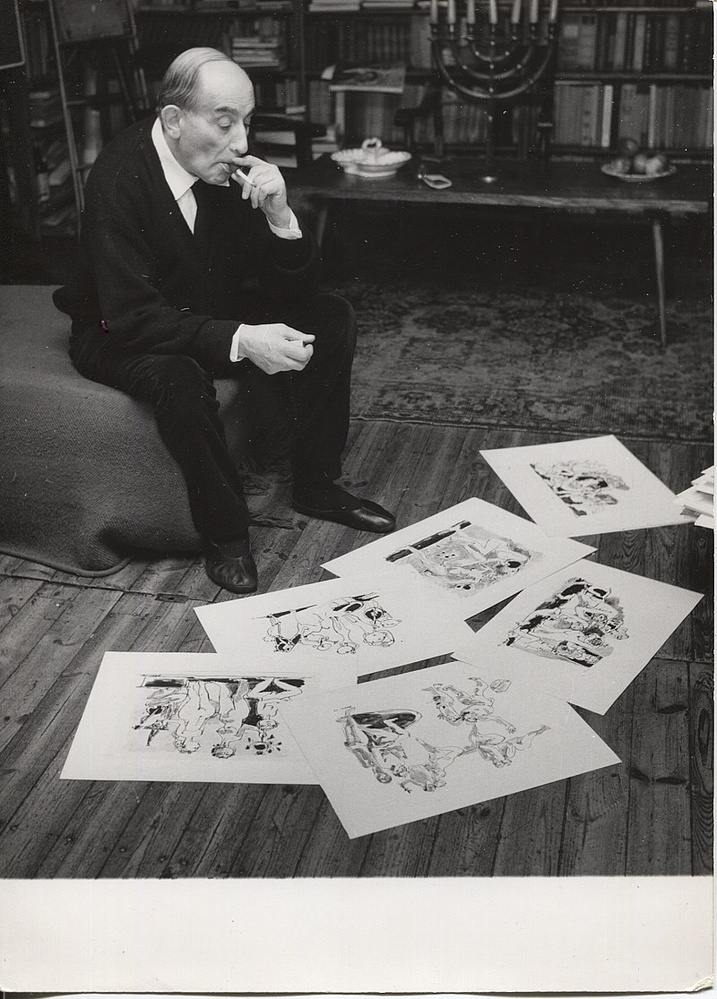 Otto Axer (1906–1983) was one of the most intriguing Polish set designers of the second half of the 20th century. A painter, graphic designer and illustrator, he studied at the Kraków Academy of Fine Arts. He trained with Weiss, Frycz and Pankiewicz, in Kraków and Paris. He made his debut as set designer in 1932 at the Municipal Theatre in Lviv, where he worked with Leon Schiller and Andrzej Pronaszka, among others. From that moment on, theatre was his greatest passion. After the war, Axer was a set designer of the Polish Theatre in Warsaw. He also collaborated with the Theatre of the Polish Armed Forces in Łódź and was a guest designer of the Powszechny and Jaracza in Łódź, Współczesny and Wielki in Warsaw, Wyspiańskiego in Katowice, and Osterwy in Lublin. Post-war credits include Drda's Playing with the Devil, Schiller's Don Carlos, Słowacki's Mary Stuart, Krasiński's Iridion, Shakespeare's Macbeth, Goethe's Iphigenia in Tauris, Moniuszko's The Countess, and Szymanowski's King Roger. These and other set and costume designs are featured at the Theatre Museum exhibition.
Otto Axer (1906–1983) was one of the most intriguing Polish set designers of the second half of the 20th century. A painter, graphic designer and illustrator, he studied at the Kraków Academy of Fine Arts. He trained with Weiss, Frycz and Pankiewicz, in Kraków and Paris. He made his debut as set designer in 1932 at the Municipal Theatre in Lviv, where he worked with Leon Schiller and Andrzej Pronaszka, among others. From that moment on, theatre was his greatest passion. After the war, Axer was a set designer of the Polish Theatre in Warsaw. He also collaborated with the Theatre of the Polish Armed Forces in Łódź and was a guest designer of the Powszechny and Jaracza in Łódź, Współczesny and Wielki in Warsaw, Wyspiańskiego in Katowice, and Osterwy in Lublin. Post-war credits include Drda's Playing with the Devil, Schiller's Don Carlos, Słowacki's Mary Stuart, Krasiński's Iridion, Shakespeare's Macbeth, Goethe's Iphigenia in Tauris, Moniuszko's The Countess, and Szymanowski's King Roger. These and other set and costume designs are featured at the Theatre Museum exhibition.
Created in the privacy of his studio and rarely shown publically, Otto Axer's paintings are small-scale forms based on previously drawn sketches. They mainly depict minimalist still lifes and figural scenes. The simplicity of form and composition is counterbalanced by a well-thought-out, bold palette. 'This painting is intense in terms of colour, yet far from garish,' wrote Andrzej Osęka in 1968 in a catalogue to Axer's show. He also noted that the pieces have a theatrical feel. 'The figures bring to mind puppets, faces – masks, objects – theatre props,' he observed. Marcin Czerniewski called the atmosphere of the paintings 'painterly theatre'. Although the works were created concurrent with the artist's intense theatre activity, they have a distinctively singular character.
The show includes oil paintings, drawings, set and costumes designs from the Theatre Museum collection.





